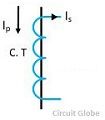Calculating Motor Speed:
A squirrel cage induction motor is a constant speed device. It cannot operate for any length of time at speeds below those shown on the nameplate without danger of burning out.
To Calculate the speed of a induction motor, apply this formula:
Srpm = 120 x F
PSrpm = synchronous revolutions per minute.
120 = constant
F = supply frequency (in cycles/sec)
P = number of motor winding polesExample: What is the synchronous of a motor having 4 poles connected to a 60 hz power supply?
Srpm = 120 x F
P
Srpm = 120 x 60
4
Srpm = 7200
4
Srpm = 1800 rpm
Calculating Braking Torque:
Full-load motor torque is calculated to determine the required braking torque of a motor.
To Determine braking torque of a motor, apply this formula:T = 5252 x HP
rpmT = full-load motor torque (in lb-ft)
5252 = constant (33,000 divided by 3.14 x 2 = 5252)
HP = motor horsepower
rpm = speed of motor shaftExample: What is the braking torque of a 60 HP, 240V motor rotating at 1725 rpm?
T = 5252 x HP
rpm
T = 5252 x 60
1725
T = 315,120
1725
T = 182.7 lb-ftCalculating Work:
Work is applying a force over a distance. Force is any cause that changes the position, motion, direction, or shape of an object. Work is done when a force overcomes a resistance. Resistance is any force that tends to hinder the movement of an object.If an applied force does not cause motion the no work is produced.
To calculate the amount of work produced, apply this formula:
W = F x D
W = work (in lb-ft)
F = force (in lb)
D = distance (in ft)Example: How much work is required to carry a 25 lb bag of groceries vertically from street level to the 4th floor of a building 30' above street level?
W = F x D
W = 25 x 30
W = 750 -lbCalculating Torque:
Torque is the force that produces rotation. It causes an object to rotate. Torque consist of a force acting on distance. Torque, like work, is measured is pound-feet (lb-ft). However, torque, unlike work, may exist even though no movement occurs.
To calculate torque, apply this formula:
T = F x D
T = torque (in lb-ft)
F = force (in lb)
D = distance (in ft)Example: What is the torque produced by a 60 lb force pushing on a 3' lever arm?
T = F x D
T = 60 x 3
T = 180 lb ftCalculating Full-load Torque:
Full-load torque is the torque to produce the rated power at full speed of the motor. The amount of torque a motor produces at rated power and full speed can be found by using a horsepower-to-torque conversion chart. When using the conversion chart, place a straight edge along the two known quantities and read the unknown quantity on the third line.
To calculate motor full-load torque, apply this formula:
T = HP x 5252
rpmT = torque (in lb-ft)
HP = horsepower
5252 = constant
rpm = revolutions per minuteExample: What is the FLT (Full-load torque) of a 30HP motor operating at 1725 rpm?
T = HP x 5252
rpm
T = 30 x 5252
1725
T = 157,560
1725
T = 91.34 lb-ftCalculating Horsepower:
Electrical power is rated in horsepower or watts. A horsepower is a unit of power equal to 746 watts or 33,0000 lb-ft per minute (550 lb-ft per second). A watt is a unit of measure equal to the power produced by a current of 1 amp across the potential difference of 1 volt. It is 1/746 of 1 horsepower. The watt is the base unit of electrical power. Motor power is rated in horsepower and watts.
Horsepower is used to measure the energy produced by an electric motor while doing work.To calculate the horsepower of a motor when current and efficiency, and voltage are known, apply this formula:
HP = V x I x Eff
746HP = horsepower
V = voltage
I = curent (amps)
Eff. = efficiencyExample: What is the horsepower of a 230v motor pulling 4 amps and having 82% efficiency?
HP = V x I x Eff
746
HP = 230 x 4 x .82
746
HP = 754.4
746
HP = 1 Hp
Eff = efficiency / HP = horsepower / V = volts / A = amps / PF = power factor
Horsepower Formulas To Find Use Formula Example Given Find Solution HP HP = I X E X Eff.
746240V, 20A, 85% Eff. HP HP = 240V x 20A x 85%
746
HP=5.5I I = HP x 746
E X Eff x PF10HP, 240V,
90% Eff., 88% PFI I = 10HP x 746
240V x 90% x 88%
I = 39 ATo calculate the horsepower of a motor when the speed and torque are known, apply this formula:
HP = rpm x T(torque)
5252(constant)Example: What is the horsepower of a 1725 rpm motor with a FLT 3.1 lb-ft?
HP = rpm x T
5252
HP = 1725 x 3.1
5252
HP = 5347.5
5252
HP = 1 hpCalculating Synchronous Speed:
AC motors are considered constant speed motors. This is because the synchronous speed of an induction motor is based on the supply frequency and the number of poles in the motor winding. Motor are designed for 60 hz use have synchronous speeds of 3600, 1800, 1200, 900, 720, 600, 514, and 450 rpm.
To calculate synchronous speed of an induction motor, apply this formula:
rpmsyn = 120 x f
Nprpmsyn = synchronous speed (in rpm)
f = supply frequency in (cycles/sec)
Np = number of motor polesExample: What is the synchronous speed of a four pole motor operating at 50 hz.?
rpmsyn = 120 x f
Np
rpmsyn = 120 x 50
4
rpmsyn = 6000
4
rpmsyn = 1500 rpm





